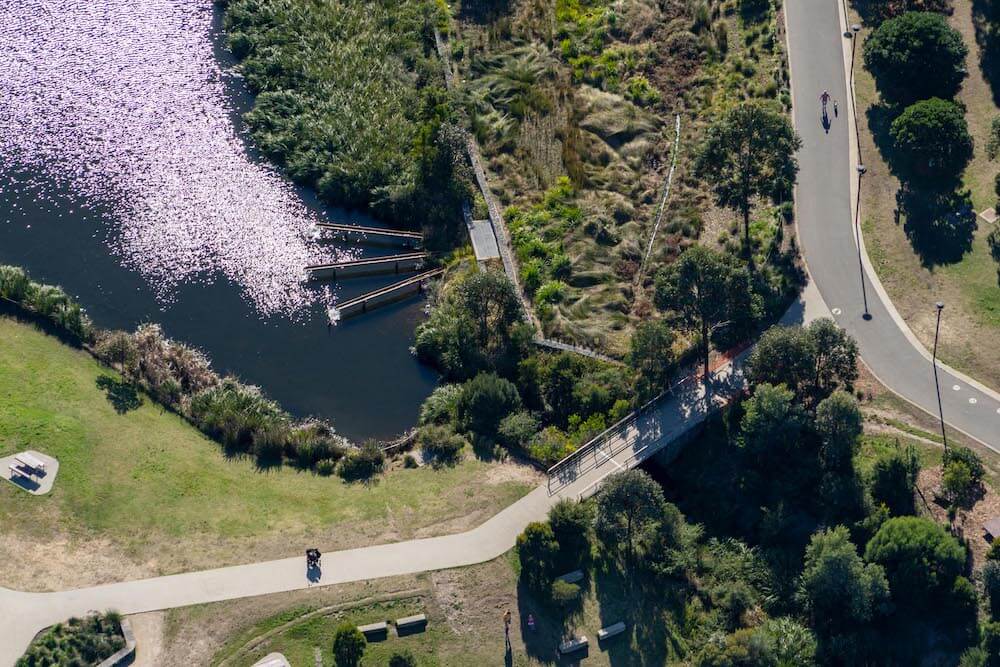By DANIEL LO SURDO
The City of Sydney’s 2017-2021 End of Term report has praised the environmental action that has been taken in the past four years of council.
In the report, the City highlighted the work from the private sector in assisting the goals of the council, while also outlining shortcomings in their climate action ahead of a new term following the results of the local government elections.
In July 2020, the City reached 100 per cent renewable electricity to meet electricity grid needs in the inner city. This move is expected to cut emissions by approximately 22,000 tonnes annually – equating to, by the City’s estimates, the emissions of almost 5,000 households.
Earlier this year, the City reached their 70 per cent emission reductions target nine years ahead of schedule. Central to this achievement, in addition to LED light installation in Sydney streets and increased solar panel use in homes and businesses, was the move to complete renewable electricity.
One month prior to reaching 100 per cent renewable electricity, the City recorded a 26 per cent emission reduction from 2006 baseline targets. In the past 15 years, the City’s population has grown by 62.2 per cent while has increased its commercial activity in spaces including Barangaroo and Green Square.
“That was at a time of growth of 53 per cent of economic activity in our city, which of course causes emissions,” Sydney Lord Mayor Clover Moore told City Hub in November.
“It could’ve been business as usual if we hadn’t done our work, and we hadn’t also been working with businesses across the city, emissions would have gone up by 57 per cent, instead we’ve got them down.”
Moore’s administration has come under fire for its increased energy consumption in the last 15 years. Since its baseline recordings in 2006, natural gas usage had quadrupled up to June 2021, prompting rivalling candidates to question the measures implemented in council.
The City’s gas usage has largely stemmed from pool heating and gas-fired co and trigeneration, which harnesses excess heat, steam or other gases that would otherwise be lost to increase the overall efficiency of power generation. Moore said that renewable energy will replace trigeneration once it “comes to the end of its natural life”.
The report praised the work of businesses that have targeted and achieved emission reductions in the past council term. Members of the Better Buildings Partnership, which represent 59 per cent of commercial floor space in the CBD, has reduced property emissions by 66 per cent since 2006. 16 buildings are now also carbon-neutral, which means that all carbon emissions are balanced by carbon removal. Better Buildings partners have also marked a 26 per cent reduction in water use since 2006.
In the housing sector, the City’s Smart Green apartments have reduced emissions by over 20,000 tonnes and water by 697 megalitres, which have saved owners over $4 million. Buildings in this program are selected on an evaluation of their energy and water consumption, size and complexity, and capacity to implement upgrades. Cleveland Mews, a 66-unit Redfern apartment building and a Smart Green participant, has recorded an 82 per cent energy use saving through lighting upgrades and heat pump installation for its pool and spa.
Water Pressure
While the report found some residential dwellings to have conserved their water consumption in the past council term, overall water use grew by 14 per cent above 2006 levels, failing the City’s zero increase target.
The report circled the per capita use of drinking water as a key issue to confronting water growth, as the City’s population is expected to grow by 32.7 per cent in the next 20 years. As of June 2020, demand for drinking water in the City has increased by 15 per cent.
Most individual buildings in the inner city derive their water from recycled water treatment facilities. The report has uncovered that regulatory barriers to greater water recycling persist and have prevented further progress on this issue.
To reduce drinking water consumption in parks, the Parks Water Savings Action Plan was formed to create a more efficient system with stronger connections to recycled water. The Plan identified improved water management practices and documented capital works projects that could deliver better outcomes for the City’s parks and open spaces.
The Sydney Park Water Re-Use Project, which was drafted by Turf Design Studio and built in partnership with the City of Sydney and the Federal Government, has provided the park with enhanced circulation and harvesting and recycling of water throughout the inner city.
The project harvests more than 850 million litres of stormwater a year from the surrounding areas of Newtown, Erskineville, Redfern and Alexandria, cleans and recycles the water throughout the park and then re-uses it for irrigation, managing wetlands and supplying the City’s nearby depot.
Stormwater would previously flow to the Munni Channel, and into the Alexandra Canal and Botany Bay untreated. The treatment train includes a gas pollutant trap, a bio-retention system, wetlands and the existing ponds. Water recycled for irrigation is also treated by filtration and UV disinfection.
Canopy Cover
The City has increased its canopy cover to 19.2 per cent during the past council term, ahead of a 23 per cent 2030 target. This is a 3.7 per cent increase from the 2008 levels.
In 2018, the NSW Department of Planning, Industry & Environment announced their intention to plant five million trees in Sydney by 2030, with an earlier target of one million by 2022 also set. As of writing, over 656,000 trees have been registered. Over 1,100 trees have been planted in the Sydney CBD.
During the past term, the City has supported 23 community gardens to help provide access to grants and the donation of materials and plants.
The report has also found that 3,390 street trees have been planted in the City since July 2017, with projects in Waterloo, Glebe and Rosebery focusing on increasing canopy cover and providing continued access to inroad tree planting.


